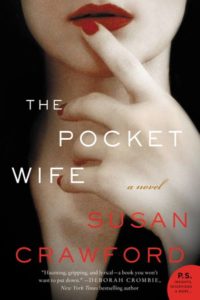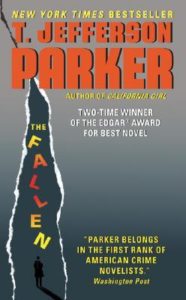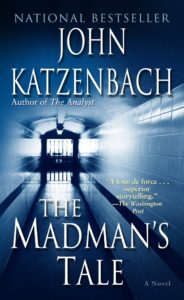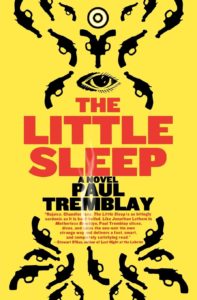When I was working on my first suspense standalone and writing an “On Crime” book review column for the Boston Globe, I struggled with what, up to then, I had considered an iron-clad rule of mystery writing: Play fair. I’d read the rules for The Detection Club founded by the Golden Age mystery authors. I knew that in order to be inducted into it, candidates had to “solemnly swear never to conceal a vital clue from the reader.” Fail to play fair, and even modern readers (who still knew the rules) would stop reading and throw your book against the wall in disgust.
Applied to today’s novels in which one or more of the characters narrate, that means that any narrator shouldn’t withhold information from or deliberately lie to the reader. So, to keep the story interesting for three hundred pages, the writer has to figure out not only how to fool the reader but also how to fool the characters who narrate.

It means, among other things, that if you allow the reader inside the head of the villain or of any other character who knows too much, there goes the mystery. Never mind that Agatha Christie famously got away with it in The Murder of Roger Ackroyd. Through sleight-of-hand, Christie sidestepped the play-fair issue by never actually allowing the reader to be inside the villain’s head. The reader is presented with Dr. Sheppard’s manuscript, a written account of what supposedly happened. It’s a similar device Gillian Flynn uses in Gone Girl. We meet Amy through her diary and only midway through the book realize she’s not who she claims to be.
In the course of my dozen or so years reviewing crime novels, I came to appreciate the many ways mystery authors have created unreliable narrators—characters who filter what happens through their own abilities and disabilities, experience and naïveté, personality and biases. They’re not lying. They’re conveying a warped version of reality and often just plain getting it wrong.
Here’s my list of ten of my favorite novels that harness unreliable narrators, playing just this side of fair. Warning: Spoilers abound.

Defending Jacob by William Landay
Please tell the court…
Criminal prosecutor Andy Barber tries to “lawyer away” mounting evidence that his son Jacob killed a classmate. Barber knows that violence runs in his family, but he can’t believe that his son could kill. Wracked with guilt, Jacob’s mother Laurie revisits incidents from Jacob’s childhood that she can no longer rationalize. Through the clever use of courtroom transcripts, Landay withholds what Andy is unwilling to face and what Laurie is willing to do about it.

The Last Days of Ptolemy Grey by Walter Mosley
Dementia and a drive-by shooting…
Ninety-one-year-old Ptolemy Grey, increasingly isolated and out of touch with reality, loses his grand-nephew to a drive-by shooting. With the help of a seventeen-year-old girl and an experimental drug that will give him a year of clarity before it kills him, he emerges from his mental fog to investigate his grand-nephew’s death. His journey to lucidity is brilliantly rendered.

Oblivion by Peter Abrams
A brain tumor and a lost weekend…
PI Nick Petrov is testifying in court when what starts as a “penny-sized headache” ends with his complete collapse. He wakes up after surgery to remove a malignant brain tumor. He knows he spent the weekend before his collapse investigating something, but he can’t remember what. He slowly decodes his case notes and tracks down a killer.

Three Bags Full by Leonie Swann
Herd mentality…
The crime solvers are sheep who try to figure out who killed George, their beloved shepherd. Some think a wolf killed him, but the cleverest among them, Miss Maple (a tip of the hat Agatha Christie’s Miss Marple) notes, “even the most sophisticated wolves didn’t drive spades through the bodies of their victims.” Their muddled notion of justice derives from a mystery novel George read to them but didn’t finish because they found it too scary.

The Pocket Wife by Susan Crawford
She’s off her meds…
Troubled Dana Cantrell talks to her St. Christopher medal and it talks back. She’s stopped taking her medication and now she spends her nights speeding through novels and rearranging furniture. She’s pushed over the edge when her neighbor shows her a compromising picture of her husband. In a drunken rage, she stumbles home. The next morning she awakes to sirens. When she calls her attorney husband for advice, he puts her on hold and pockets the phone. The reader wonders: Is she crazy, or being made to think she is?

The Curious Incident of the Dog in the Night-Time by Mark Haddon
He’s on the spectrum…
Christopher John Francis Boone is a 15-year old who can rattle of prime numbers and square roots but can’t distinguish sarcasm from happiness. When he finds his neighbor’s dog impaled with a garden fork, in his detached, oddly affecting way, he tries to work out what happened: “…the dog was probably killed with the fork because I could not see any other wounds in the dog and I do not think you would stick a garden fork into a dog after it had died for some other reason.”

The Fallen by T. Jefferson Parker
Words colored with emotion…
San Diego homicide detective Robbie Brownlaw’s life changes after he’s thrown from a sixth-floor window…and survives. Three years later he’s recovered but now he has synesthesia: when people speak to him, he “sees” their emotions as colored shapes. Red squares of deception roll from the mouths of liars. Good as he’s become is at reading the emotions of suspects and witnesses, he’s blind as a bat when it comes to reading his own wife’s.

The Madman’s Tale by John Katzenbach
Haunted by the past…
Former mental patient Francis Petral reluctantly attends a reunion at the nightmarish Western State Hospital where he was once committed. He wanders about the grounds, stalked by ”ghosts of memory.” A fellow former inmate urges him to write what he remembers. Francis returns to his apartment to feverishly write the story on the walls and descends into madness.

The Little Sleep by Paul Tremblay
Every hour waking…
PI Mark Genevich struggles teeters on the verge of unconsciousness as he walks Southie’s mean streets. He sleep-walks through an interview a prospective client. When he wakes up he can’t sort hallucination from reality. And what is the meaning of those squiggles and scrawls that his narcoleptic brain directed his hand to write?

The End of Everything by Megan Abbott
Adolescent angst…
At thirteen years old, Evie Verver is a simmering mix of child and woman, of yearning and innocence. One summer day, her best friend disappears and Evie is the only one who saw the maroon sedan (was it really there?) that drove slowly up and back just before Lizzie vanished. Now everyone is listening to her.

















